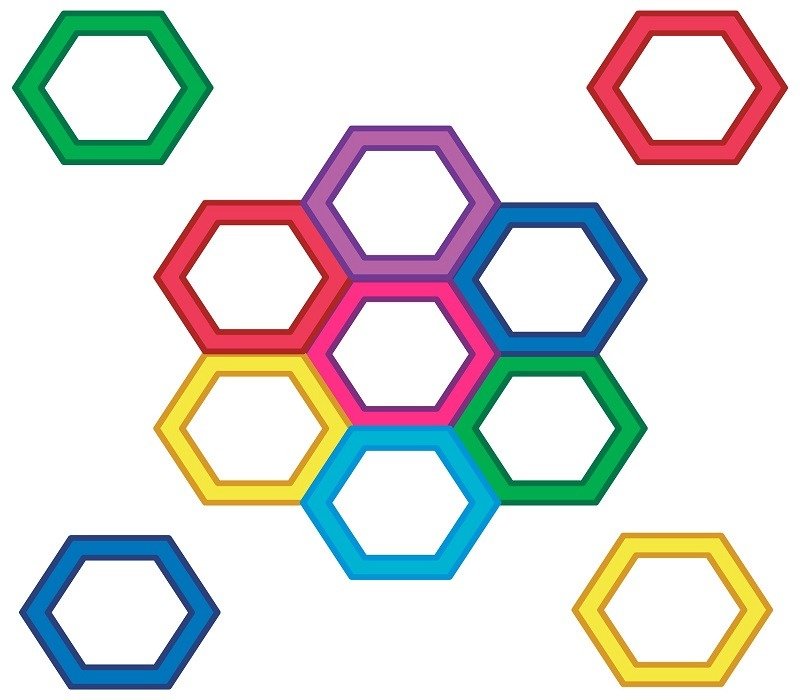Has it ever crossed your mind what “shape:yl6axe4-ozq= pentagon” actually is? It looks like some sort of code at first glance, but it’s just a technical term for a five-sided geometric figure—the pentagon.
Pentagons are everywhere, from architecture to nature, and understanding them can be useful in many fields. This article will explain everything about this shape in the simplest way possible. Whether you’re a student, artist, or just curious, you’ll find this guide easy to follow.
What Exactly Is a Pentagon?
A pentagon is a two-dimensional, flat shape with five straight sides and five angles. “shape:yl6axe4-ozq= pentagon” may appear as a random collection of characters, but it probably is used as some kind of identifier, perhaps for a database or a design system.
The term “pentagon” is derived from the Greek terms “penta” (five) and “gonia” (angle). Unlike basic shapes such as triangles or squares, pentagons possess an additional side, which makes them slightly more complex but also more versatile.
You can find pentagons in the real world. The most well-known one is The Pentagon, the headquarters of the U.S. Department of Defense, which is built in this form for structural reasons. Other examples are home plates on a baseball field, some street signs, and even natural shapes like some crystals and flowers.
Various Types of Pentagons
Not all pentagons are equal. Based on their sides and angles, they can be categorized into various types:
1. Regular Pentagon
A regular pentagon possesses five equal sides and five identical angles (measuring 108 degrees each). Such symmetry has made it popular in architecture and design.
Many military logos and company logos, for instance, utilize regular pentagons because they symbolize balance and strength.
2. Irregular Pentagon
An irregular pentagon consists of sides and angles of varying lengths and degrees. It is therefore not as uniform but more adaptable in design.
A real-life traditional example is the floor plan of a house in which rooms are not symmetrical, forming an irregular pentagonal shape.
3. Convex vs. Concave Pentagon
Convex Pentagon: All interior angles are pointing outward, with no inward-caving sides.
Concave Pentagon: One or more interior angles are curved inward, making a “dent.”
A starfish is a real-life illustration of a concave pentagon due to the fact that its arms form inward curves.
Why Is the Pentagon Shape So Significant?
The “shape:yl6axe4-ozq= pentagon” is not simply a mathematical wonder—it has everyday applications across a variety of areas.
Architecture & Engineering
The pentagon’s five-sided form is stable and uses space in an efficient way. The Washington, D.C., building of the Pentagon is an ideal illustration—its form accommodates less walking distance between offices than would a rectangular format.
Nature’s Designs
Nature loves pentagons! Some flowers, like the morning glory, have five petals arranged in a pentagonal pattern. Even viruses, like the adenovirus, have protein coats shaped like pentagons.
Symbolism & Art
In sacred geometry, the pentagon (and its 3D counterpart, the pentagram) symbolizes harmony and protection. Artists like Leonardo da Vinci studied pentagonal symmetry in their works.
Mathematical Properties of a Pentagon
For math lovers, here are some important facts about pentagons:
Interior Angles: Every interior angle in a regular pentagon is 108°, and they add up to 540°.
Diagonals: There are five diagonals (lines between non-adjacent vertices) in a pentagon.
Area Formula: For a regular pentagon with side length “a”, the area is given by:
Area=52×a2×cot(π5Area=25 ×a2×cot(5π)
(Don’t worry if this seems complex—most people just use online calculators!)
How to Draw a Pentagon (Step-by-Step Guide)
If you’ve ever attempted to draw a perfect pentagon by hand, you know it’s difficult. Here’s an easy way:
Method 1: Using a Protractor (For a Regular Pentagon)
Draw a circle and identify the center point.
Divide 360° by 5 to find 72° angles.
Identify five points on the circle at these angles.
Join the dots with straight lines—voilà, a pentagon!
Method 2: The “Fold-and-Cut” Trick (For Kids & Beginners)
Fold a strip of paper into a knot (similar to tying a sloppy knot in a rope).
Flatten the knot lightly—it is a jagged pentagon shape!
Trace the lines to sharpen your pentagon.
Real-World Uses of Pentagons
Outside of math class, pentagons are involved a lot in:
1. Military & Defense
The building known as the Pentagon is the largest office building in the world by floor space, employing more than 25,000 people. Its layout reduces walking time between departments.
2. Sports Equipment
A home plate of a baseball is a pentagon, providing fair play by providing clear boundaries of the strike zone.
3. Biology & Chemistry
Certain molecules of carbon (fullerenes) create pentagonal structures, which have resulted in advances in nanotechnology.
Pentagons: Misconceptions
“All pentagons resemble The Pentagon building.”
→ No way! Only regular pentagons are equal-sided.
“Pentagons are only for mathematicians.”
→ Wrong! Artists, architects, and even biologists employ them.
“Drawing a pentagon needs advanced geometry.”
→ False—even children can draw one with the folding trick!
Interesting Pentagons Fun Facts
The U.S. Pentagon building itself has five sides, five floors, and five rings—all intentionally!
In ancient Greece, the pentagon represented the five elements (earth, air, fire, water, and spirit).
Bees occasionally construct honeycomb cells in pentagonal forms when space is limited.
Conclusion: The Power of the Shape: YL6AXE4-OZQ= Pentagon
The “shape:yl6axe4-ozq= pentagon” is more than a mathematical term—it’s a shape of profound mathematical beauty and everyday importance. From buildings to the natural world, pentagons show that five sides can be as useful as four or six.
The next time you notice a street sign, a baseball diamond, or even a flower, take a second glance. You may just catch a glimpse of a pentagon in plain sight!
For more articles; visit our website “techtricks“.


